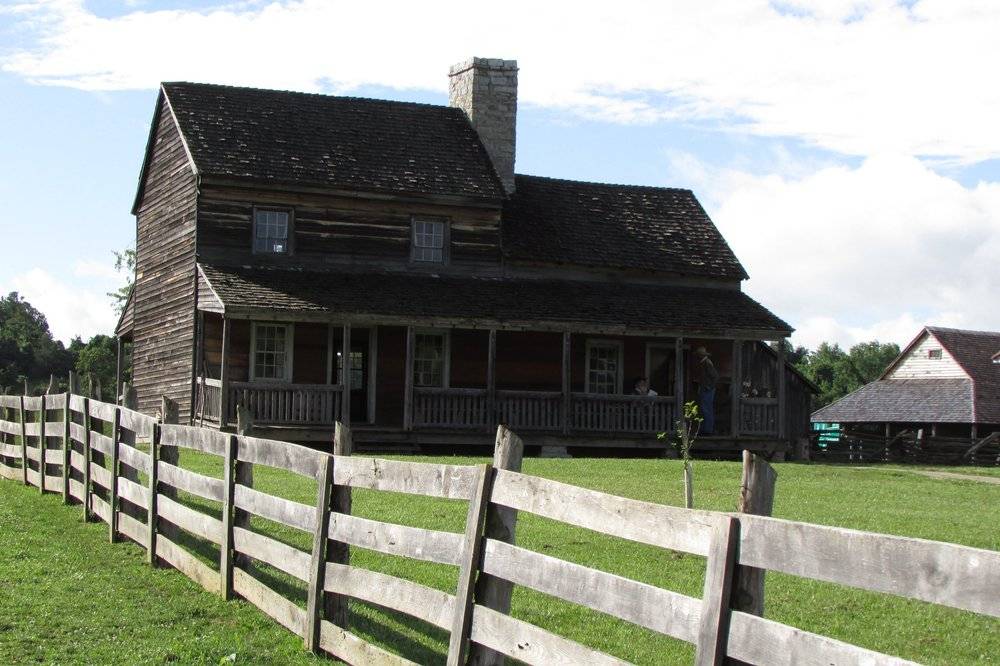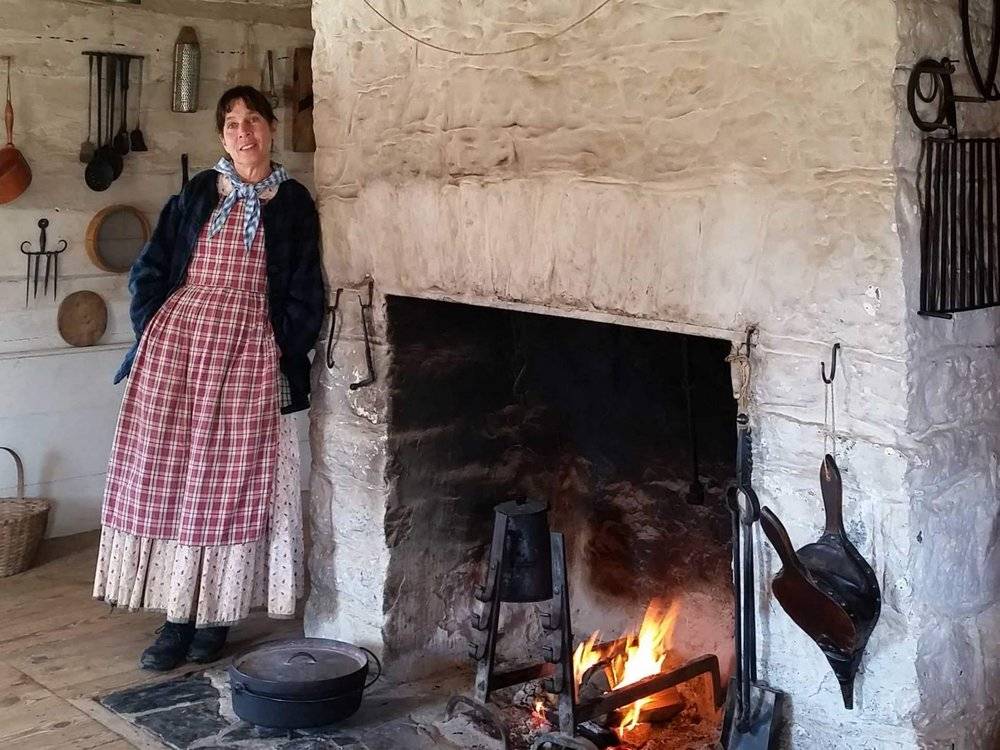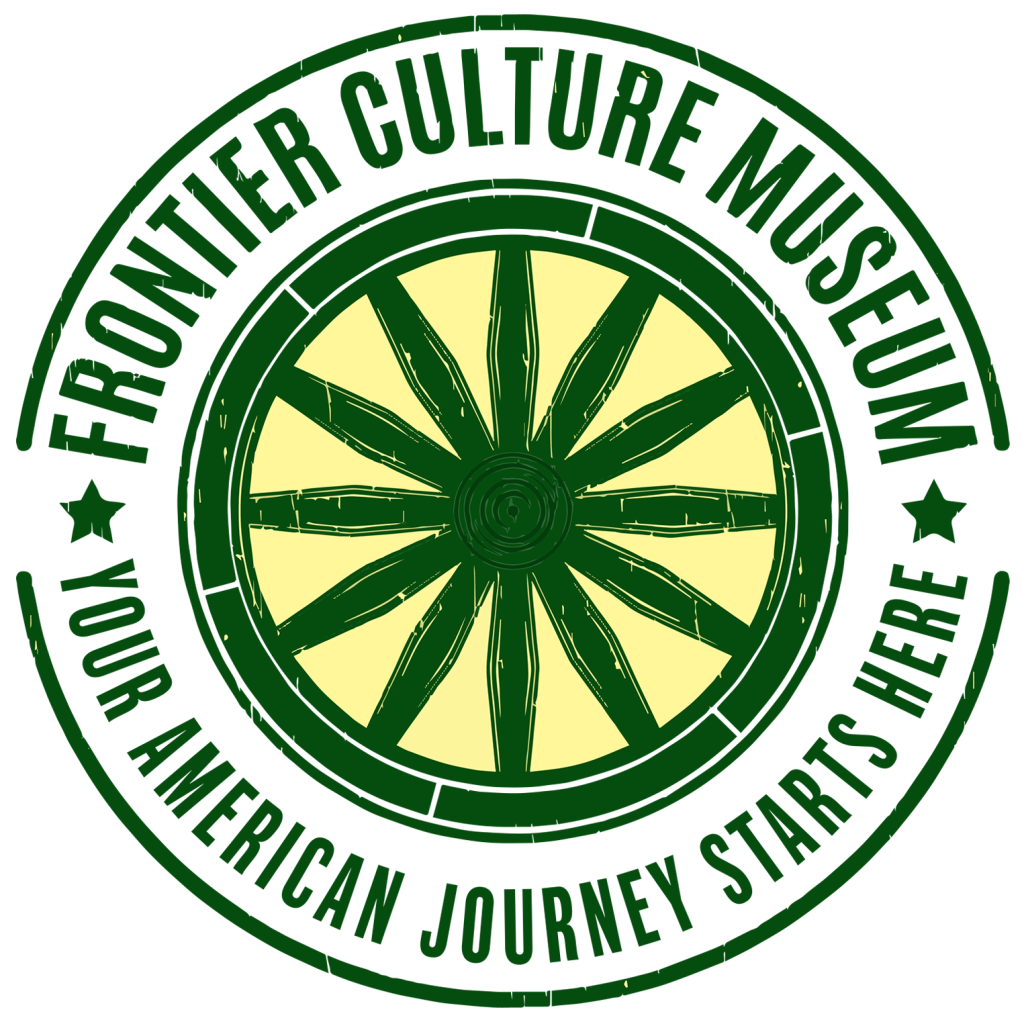Lecture Series
Valley of Virginia, 1850s

The 1850s American Farm was originally located in Botetourt County, Virginia. A farm like this would have been owned by a family of “plain folk.” They may have held some enslaved people in bondage but were more likely to intermittently “rent” unfree laborers from other enslavers. This social class included farmers who owned their own land and produced enough to get by with perhaps a little surplus. The farm house is modest. New forms of technology and methods of construction were being used to build it and the other buildings. Different floor plans and architectural styles reflect different cultural influences.
By the 1850s, the Valley of Virginia was integrated into an expanding national market for agricultural and manufactured products. An improved road network was supplemented by water and rail transportation that permitted Valley farmers and manufacturers to easily ship their products to eastern cities.
In return, manufactured goods from Europe and other parts of the United States became available to Valley consumers. Mass communication, in the form of newspapers and books, made Valley residents more aware of events and ideas from the outside world.
In this environment, distinctions among the white descendants of Old-World settlers declined and most embraced a common American culture and way of life. Ethnic traditions were disappearing and the publication of books and newspapers in German had virtually ceased. Many residents turned away from the Lutheran, Reformed, and Presbyterian faiths of their immigrant ancestors in favor of Methodist and Baptists revivalists following the Second Great Awakening of the early 1800s.
While the descendants of colonists from England, Ireland, and Germany were creating a common American identity in the Valley, slavery and inequality was the legacy inherited by the descendants of African captives. Enslaved African Americans formed nearly 20% of the region’s population in 1850, which represented a small decline from 1820, though the actual number of enslaved people in the Valley increased over the thirty-year period.

By the 1850s, many African Americans in the Valley of Virginia had been born and raised here and had made families of their own. Significant numbers, especially among the enslaved who were rented annually, came from the eastern part of the state where they had left behind families.
Both enslaved and free African Americans could be found performing a variety of work. Farm work continued to be a primary occupation for men, but they were also employed in large numbers in the Valley’s iron industry. Women did domestic work such as cooking, housekeeping, and laundry, but could also be seen doing field work, especially during harvest time.
Virginia remained a major exporter in the domestic slave trade during the 1850s, and the Valley contributed to the supply moving south and west to Georgia, Alabama, Mississippi, Louisiana, and Texas.
The regions newspapers during the period often featured advertisements by slave traders willing to pay a premium for slaves for the “southern market.” Many African American families were broken-up by the sale of a member, and the threat of separation from family was a constant fear for enslaved people.
By the 1840s, Euro-American settlers were venturing ever-deeper into the trans-Mississippi West. The settlement of Texas began as early as 1822, when it was still a Mexican province, and many of the early founders and leaders of Texas were Virginians. After Texas, the next important destinations were Oregon and California, particularly after gold was discovered in California in 1849.
